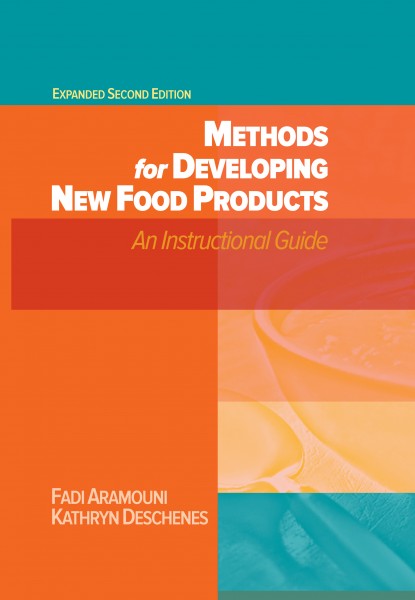Blockchain-based system targets small, medium-sized enterprises
b_verify is designed to help small and medium-size enterprises — especially those in developing nations.

An interdisciplinary team from Massachusetts Institute of Technology (MIT), Cambridge, Mass.; The Wharton School of the University of Pennsylvania, Philadelphia, Pa.; and Boston College, Chestnut Hill, Mass., created b_verify, a new blockchain-based system that has the potential to disrupt the global supply chain.
b_verify is designed to help small and medium-size enterprises — especially those in developing nations — receive financing from lenders at potentially better terms while mitigating warehouse deposit fraud.
“The potential benefits are vast and global in scale,” says Gerry Tsoukalas, professor of operations, information and decisions at Wharton. “Obtaining loans at reasonable rates can be very challenging for small firms.”
“The use of blockchain platforms [like b_verify] has the potential to redefine global supply chain operations by democratizing operational transparency,” adds Nikolaos Trichakis, MIT professor of operations management.
The team, which includes computer scientists Henry Aspegren (MIT and Tsinghua University) and Mark Weber (IBM and MIT), worked with the Mexican government and Ukrainian entrepreneurs to conduct field visits on the road to invent a new system that incorporated elements of both public and private blockchains. b_verify can be accessed through smartphones and tablets without the need of advanced technologies.
What is b_verify?
When a bank or other lender is making a decision whether or not to give a company a loan, it will assess the firm’s creditworthiness, or ability to re-pay. Generally, the stronger the business, the better the ability to pay back the loan, and so it will get more favorable loan terms.
Smaller firms will benefit because they can qualify for better financing terms than they would otherwise get, since there will be reduced risk to the lender.
Through a blockchain-powered app, b_verify lets lenders check a company’s inventory transactions because they don’t have to send people to monitor operations on-site or rely on records that can be easily falsified. In turn, firm inventory can be better put to use as collateral for the loan. Second, the transactions record itself, thus opening a window of transparency into the firm’s operations.
By observing inventory transactions, lenders will obtain a more accurate picture of the health of a company’s business than they could otherwise by simply observing loan requests.
How it works
B_verify uses blockchain technology because it is a cryptographically secure, or virtually unhackable, database. As a distributed ledger where all participants have a copy of the records, the blockchain makes falsifying transactions nearly impossible. Also, the blockchain is a system in which members do not have to trust each other for it to work.
“To use a private blockchain means losing the properties that made blockchain famous in the first place,” Weber says. “Bitcoin pioneered a specific type of distributed ledger technology in which a large number of nodes build consensus on successive blocks of information. Each block points to the previous one, thereby making the sequence interdependent. The larger the network of nodes and the more independent nodes are from one another, the more secure the ledger. This security comes with high energy and transaction costs. Bitcoin’s network has become so secure, we refer to its ledger as (virtually) immutable. But, this property is lost if you use a smaller, closed network controlled by an intermediary or group, which is what so-called private blockchains do. There’s nothing wrong with delegating trust to an intermediary, but in that case, it makes little sense to use a blockchain system architecture, except to capitalize on the hype.”
The problem confronting the team is that they needed elements of both public and private blockchains for their purposes. That’s why they created a hybrid—b_verify.
“At a high level, public blockchains such as bitcoin lack in privacy, which is essential in supply chains. Private blockchains lack in scale, and therefore security,” Aspegren says. “b_verify uses unique innovations to bridge these gaps. That is, it is designed as a ‘thin’ protocol utilizing (not replacing) the existing infrastructure of Bitcoin or any secure, public blockchain, while ensuring privacy.”
On the ground, this is how b_verify would work—A farmer brings crops to the warehouse and places the goods in a digital scale linked to the internet. The amount of goods are weighed and recorded. A warehouse employee manually confirms the weight. If all three agree, they sign off with their private digital keys. Then, the inventory is sent to a server running the b_verify protocol for processing and recorded into the public blockchain. Lenders can access these records to verify inventory as collateral and the history of transactions. If all is well, the loan is approved.
Practical uses and limitations
The research studied how firms should finance their operations. In 2015, researchers visited a warehouse in Italy that stored parmesan cheese, which was used as loan collateral. (The bank owned the warehouse and had essentially taken on a critical role in the cheese supply chain, giving it deep operational expertise and a superior ability to issue profitable loans.) The two later joined forces with Chod, a supply chain finance expert from Boston College, and Aspegren and Weber at MIT, who were developing a new blockchain-based solution to deal with warehouse deposit fraud.
“Aspegren and Weber had an idea for how to design a system to facilitate trade in those economies” to overcome issues such as fraud, Trichakis says. “People would bring grain to a warehouse, deposit it and get a loan. But, sometimes there’s no grain — it’s difficult for banks to check that it’s actually there. We helped them design a system that is effective for the financing aspect. After about three years of development, b_verify was created. The next step is on-the-ground deployment.”
Mexico and Ukraine are interested in b_verify because they face a big problem with warehouse fraud.
“They are countries that use warehouse deposits a lot,” adds Trichakis.
These governments identified a strategic need to improve the accuracy of their warehouse deposits and loans. Also, in the agricultural sector, transaction records are often required to be made public by law — 49 of the 62 agriculture-based economies have warehouse receipts legislation, and 13 of those have specified laws for electronic warehouse receipts.
“Because these systems are regulated by governments, adoption is more of a top-down project,” Weber adds. “This is the target market for a more secure protocol like b_verify, which would help all stakeholders. b_verify requires a third party server [such as IBM] to play a coordination role in the system, though the cryptography is constructed such that stakeholders need not trust this coordinator.”
“Opening a small window of transparency into a firm’s operations, in particular, its input transactions [like inventory orders], could go a long way to alleviate the difficulty of financing operations, which is a systemic problem for small and mid-size enterprises that is all the more severe in developing economies,” Tsoukalas adds. “Blockchain technology could provide an efficient way to accomplish this by furnishing input transaction verifiability in supply chains in a way that is accessible to small and mid-size companies. We believe this is a novel use case for blockchain technology that has hardly been researched.”
The team is currently working with the Inter-American Development Bank, Washington, D.C., to pilot b_verify in Latin America.
“If successful, we hope this work will motivate warehouse modernization projects throughout the region to the benefit of farmers as well as the economic health and food security of those nations,” Weber says.
Looking for a reprint of this article?
From high-res PDFs to custom plaques, order your copy today!








